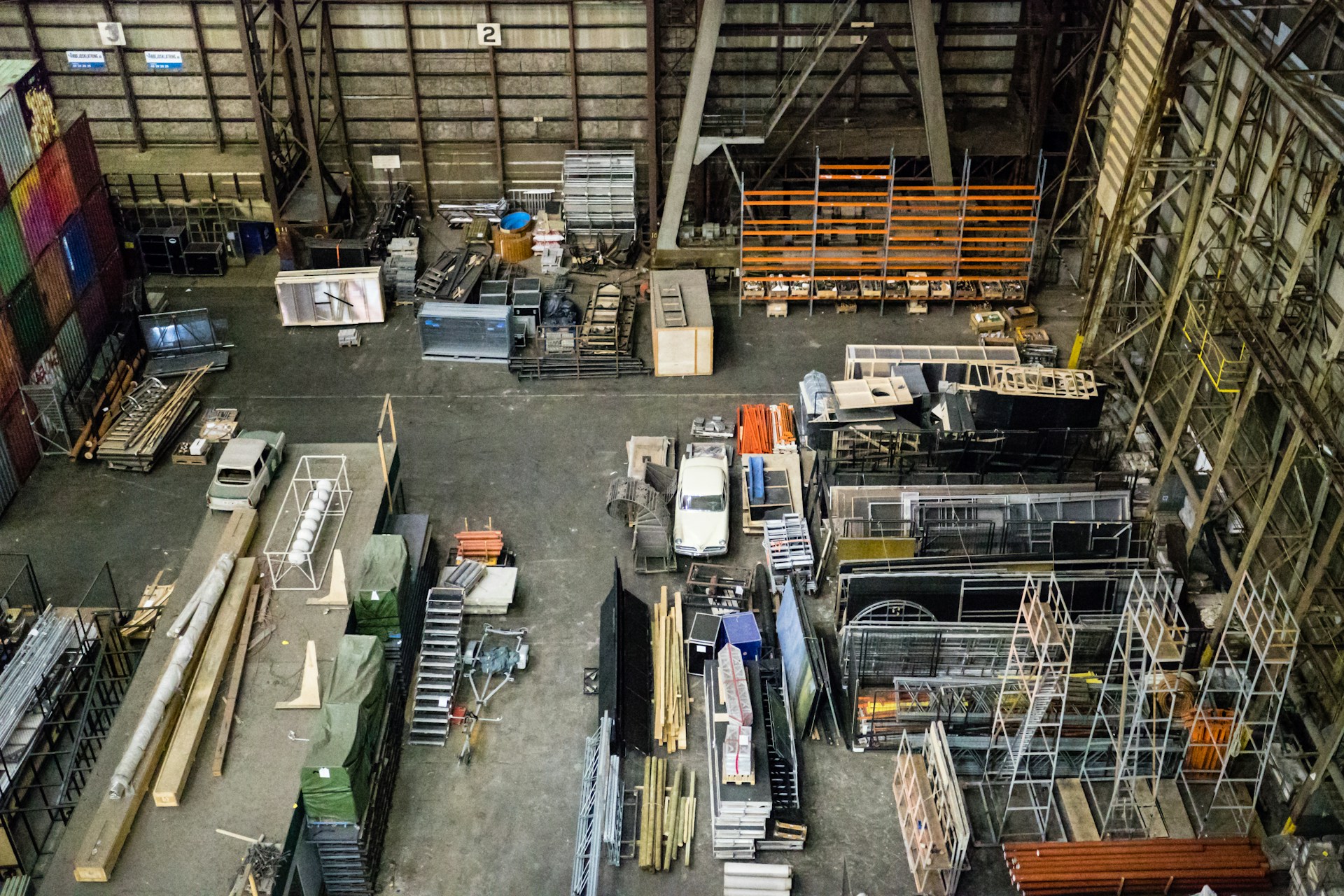I found Mary in researching a unique artist fellowship in Pittsburgh called Flight School that acts as a special career-boosting program for artists, including trainings on strategic planning and marketing. It’s hosting organization, Pittsburgh Filmmakers and Center for the Arts, describes Flight School as “an opportunity for artists in the Pittsburgh region to form a fellowship with artist peers and advance their artistic careers in a way that sustains and expands financial and strategic goals, while keeping their artwork as the central feature.” Mary participated in and graduated from Flight School in 2014.
Mary Mazziotti: That was quite a while ago. I had a career in advertising, as a writer and creative director and had done that for a number of years. Finally I was just burnt out on that and wasn’t quite sure what I wanted to do. So I quit and just started doing artwork. I started out mostly as a painter doing urban landscape stuff, and some other things, took a few classes here and there. Starting out, you know, you put your work in a cafe, and then you put your work in another little space, and finally you get into a gallery, and da da da da da da.
I do a lot of residencies. I’ve been to Spain and France and Australia, and those were great, I really, really enjoyed doing those. Almost all my work now is making “memento mori,” do you know what that is?
KS: I spent a little bit of time on your website, so it’s remembering that we’re going to die.
MM: Yes. And the reason I stared doing that was because there was a documentary about downtown Pittsburgh, and the morgue used to be in the city-county building, and they were doing some renovations, and they came across this cash of photos of people who had died unidentified. And these were from the turn of the last century, they weren’t dated, but I’m guessing early 1900’s. And I just thought the photographs were extremely powerful and evocative, so I started doing work about them, and I’ve been working on that ever since.
When I started out the work was kind of gothic-y. And then it sort of skewed more towards humor. Because I like humor in work, that kind of work appeals to me. Would you like to see the pictures? I’ll get them, they’re right here.
KS: So you were able to actually get them?
MM: After I saw them in the program, I asked if they would let me come down and photograph them and use them in my work and they said sure.
The photos were mounted in this box that was like an old fashioned medicine cabinet and you opened the door of the medicine cabinet and inside were like pages made of wood, wooden panels that swiveled out just like a book, and these were glued to that.
MM: [shrugs]KS: Yeah. That’s a fun mystery. It makes me think of the Mutter Museum in Philly.
MM: You know they’re identified by book, like, photo 54 morgue book #31. I don’t think those books still exist. And they just found this when they were doing renovations, and I hope it still exists.KS: I hope so too.
MM: This is sort of what started me that path.KS: So what are some of the things that these photos inspired you to do?
MM: Oh lord. God it’s hard to answer that. They made me start thinking about death and that people want to be remembered after death, how strong that is, and what people want to be remembered for and what people actually are remembered for, if they’re remembered at all. Someone said (I have no idea who) that you die three times: you die when you physically die and then you die when you’re put in the ground and then the last time someone remembers you.
KS: [looking through the photos of the photos of the unidentified bodies] I don’t think I’ve ever seen dead people like this before.
MM: I certainly haven’t. I mean some of them you wouldn’t know that they’re dead.
KS: Well some of them could be sleeping, right?
MM: Yeah, and they’re respectfully treated. And that’s another thing, with these, maybe they were murderers and child abusers and you know. You don’t know.
KS: Have you found other people that you feel like are your peers in your genre?
MM: I don’t know of much other work in the memento mori, at least contemporary. There’s a lot of old stuff. The Victorians of course were masters of morbid sentimentality, and it goes back to the Romans, I mean there were Roman works of memento mori too. It’s a very old desire and something that needs to be contemplated, you know. Life is short.
MM: Not so much. It could be anything really. There’s two new bodies of work that I just finished and one of them that I’m working on. I don’t know if you can see into the other room there, there’s hanging up, I’m doing a series based on quilts that are disintegrating, quilts falling apart. And just having to do with entropy as far as the physical qualities of life and this actually is more personal because I’ve had a number of operations in the last couple of years, so you know, I find that my body scars more easily as I get older, and there are more and more things that are harder to overcome. And so that’s something also, the disintegration, our physical disintegration. I really like the idea of it being quilts, where the whole point of the quilt is it being pieced together. And I also really like working in textiles and in embroidery because it’s sort of a homely medium. And it contrasts with the seriousness of death.
MM: Exactly. And also frankly just for physical reasons, it’s getting harder and harder for me to schlep paintings around. I can do a whole show and carry it in a box, I mean here’s a third of a show [points to a short stack of folded embroidered cloth on table].[Brings a set of postcards of her embroidered comics and gives them to me]
MM: I’ve done a couple of those. I’ve done: A Day in the Life of Death, and A Day in the Life of Mrs. Death, and Death’s Weekend. Those are fun to do.
MM: No. I had another one sort of in the works. I was thinking about doing one called “The Amiable Reaper,” and I started working on it and it’s just pushed aside. Also with the entropy idea, what I’m working on now, I really like this idea of things falling apart. And these are jokes that start out as text in a line, you know like a window of text, and then they just disintegrate down at the bottom, but I love the idea of working with jokes.
KS: I like how you make the text disintegrate, and it’s hilarious also. [laughs]
MM: This has really been a fun one to work on. The only problem is the jokes that I find funny are usually the dirty ones, so I’m trying really hard to find jokes that aren’t so, you know. [laughs] So I’m still working, this is taking fucking forever. But I like doing the hand embroidery, so.
KS: And was embroidery something that you learned specifically for these projects?
MM: No, my embroidery skills are not fantastic. I don’t do a lot of surface embroidery, I don’t do surface embellishment, so I have books of stitches and stuff, but really I just use a very simple stitch, and usually I work in red because I like it. Although it can be problematic because I just washed this one and the fucker ran.
KS: Are most of your days very similar? Will you tell me a little bit about what an artist routine looks like for you right now?
MM: Sure. I live a couple blocks away. I come to the studio usually around 10, I get online and I fart around, and I spend a lot of time looking for opportunities to show my work.
I have a lot of online listing opportunities that I check, there are special fiber groups that post opportunities, and I pretty much look for three things now: I’m looking for either a venue that is a good place to show, like a museum, or I’m looking for the juror is someone I want to get my work in front of, or if there’s a lot of prize money that might be going. Because there are so many listings of places you can show, but it costs $35-50 to apply, then if you do apply, then you ship your work and you ship it back. And how does that advance your career? If you’re interested in advancing your career, which I am. And if you have 30 things going on this year of, you know, a show in a community center and lots of group show, there’s a point at which you have to have done that and now you’re ready to move on. So that’s the point that I’m at. I’ve been in lots of group shows and now I need to get to the next level. And that’s very hard.
MM: After I internet, I usually sew, I usually work on the artwork.KS: Just dive right in. That’s awesome. And how did you find out about the Flight program?
MM: Through another artist who recommended me for the program. I think it’s an excellent program for artists starting out. I think I was already doing a lot of the stuff that they suggested you do, especially in terms of marketing and promotion and that sort of thing. Although it’s not a bad thing to be reminded of stuff you should be do.Now I don’t think that any program is going to be 100% for all the people. So if you come away from this taking something, it’s a plus. If you are project-oriented, this program is excellent because it tells you, I forget what it’s called, it’s like a spreadsheet of: if you’re going to do a presentation to a grant-making organization, you go in with all of these headings, you have figured out how your project fits, how it’s going to benefit people five years down the road, how you’re going to budget it, how you’re going to do all this. I can’t imagine a grant-making organization, not being extremely impressed with that. But I don’t do that kind of work.
KS: And all sorts of top-down funding, or really institutional opportunities, are going to ask for that kind of clarity.
MM: Yeah, with good reason.
KS: Yeah, absolutely. So you would recommend the program for people who are early enough that that’s something that’s new or something they’re trying to figure out.
MM: And people who are going to be looking for funding for projects. Then I think it’s a really good program. And also, I have to say that every time I see a book like this, the creative artist guide, I think, if this shit worked as well as the artist said it did, why is the artist writing this book? If it really worked, then the artist would be having a show at the museum, and not writing books about how to have a show at a museum, they would be having a show at a museum. I do think that there’s an awful lot of happy horseshit out there, you know?
MM: I am not very connected to the art community. I have some friends who are artists, and curators and gallerists, gallerinas. But again, I just am not a real social person, I don’t hang out with artists. Are you going to see anyone at the Reliant Building? There’s a guy who has a building a couple blocks from here who’s turned it into artist studios, there’s about ten studios in the building, and a couple of the people in Flight School, who were in my group in Flight School, have studios there. And I think they tend to hangout together more and work cooperatively, or work on projects together.KS: So your favorite and preferred situation is to mostly be independent?
MM: Yeah, absolutely. I mean that’s why I think you guys making films, or doing theater or things where you need dozens of people, you need film editors and sound people, I think, oh god, I’d go insane.KS: So, I love that you’re doing things that are humorous. And I’m wondering, do you feel like your sense of humor has evolved or changes at all with the projects? Your sense of funniness, how do you feel it changes or stays static?
MM: I don’t think it changes that much. I don’t know how you would change your sense of humor. [laughs]
KS: [laughs] I don’t know either. But maybe different pieces of it could come out at different times?
MM: Well, I think that when I first started out doing this project, the first couple of pieces that I did were very sort of goth-y and sort of grim and what you would expect if you were thinking about death. And really, what’s the point of that? I mean, the whole point of art is to show you things that you don’t expect. So that needed to be rethought. And I personally respond to things that are funny better than I do to things that are serious and strokey beard. And people so far who have seen my work respond to that part of it, and I think it makes it more memorable.










